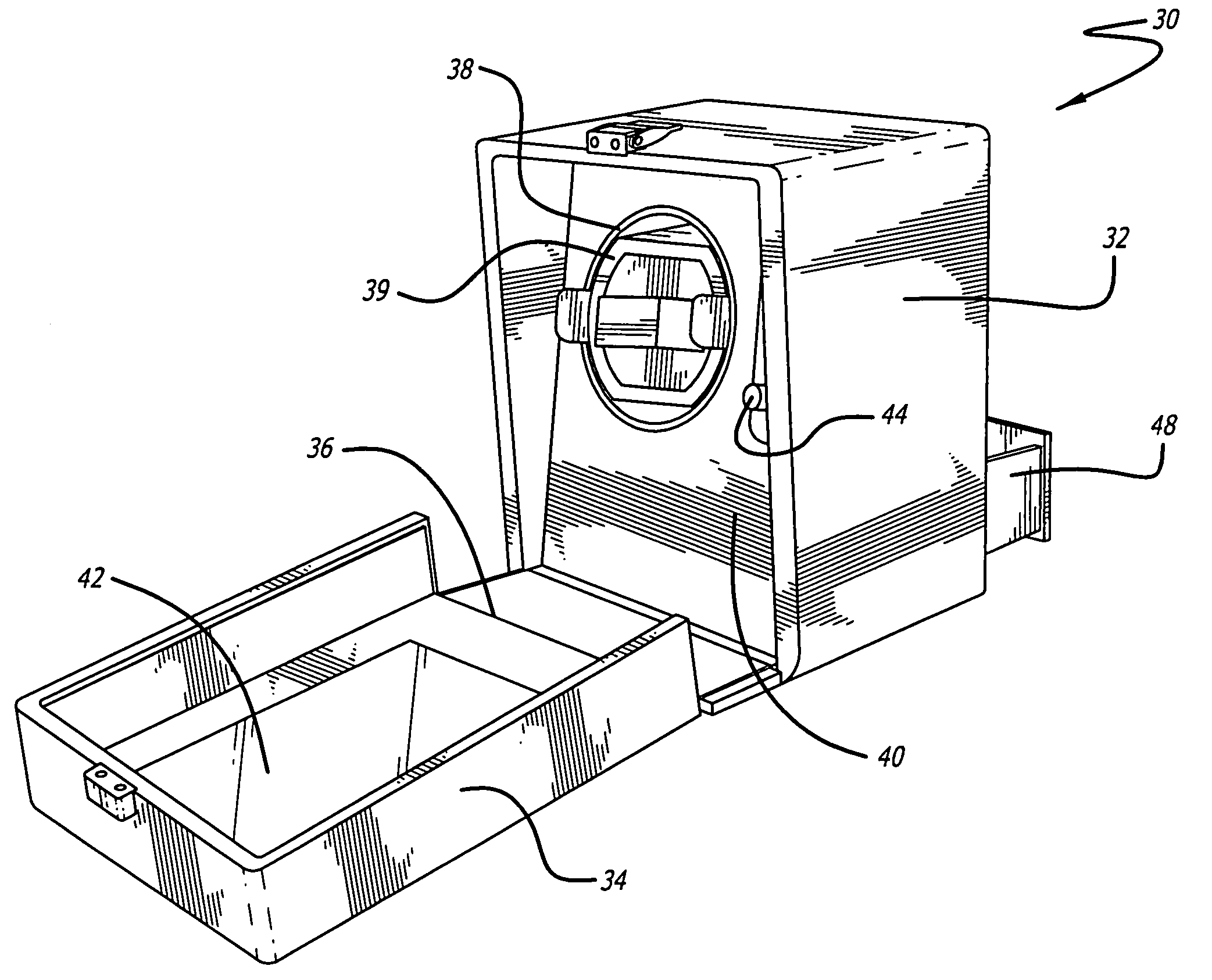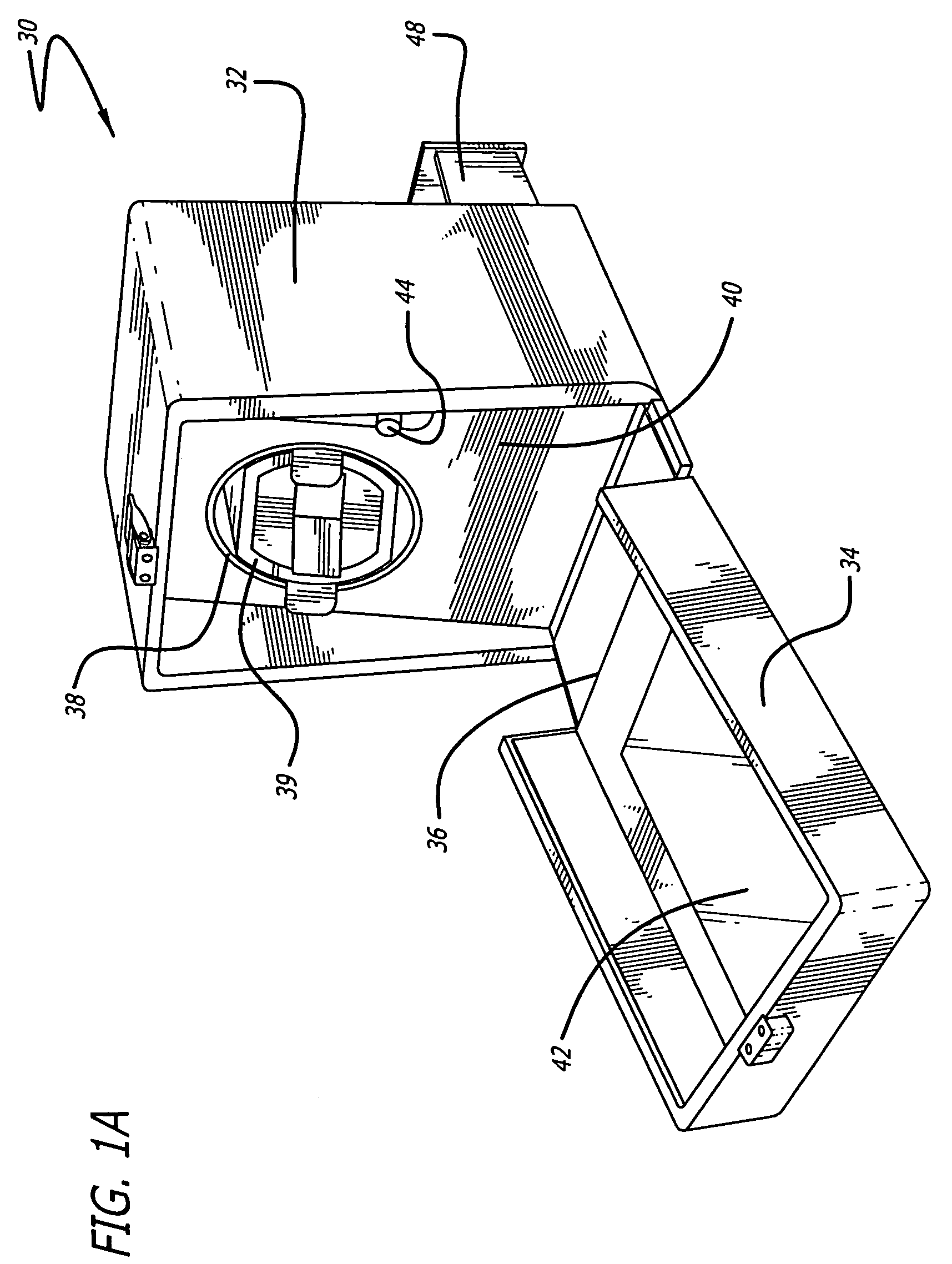Controllable watch winder for self-winding watches
a watch winder and watch technology, applied in the direction of electric winding, instruments, horology, etc., can solve the problems of rotor oscillation back and forth, inability to fully rewind, and inability to self-winding watches, so as to save power, facilitate watch inserting, and facilitate use and adaptability.
- Summary
- Abstract
- Description
- Claims
- Application Information
AI Technical Summary
Benefits of technology
Problems solved by technology
Method used
Image
Examples
Embodiment Construction
[0039] With reference to the drawings, which are provided for purposes of exemplary illustration, a new and improved watch winding mechanism and method embodying the principles and concepts of the present invention and generally designated by the reference number 30 will be described.
[0040] In a preferred embodiment as shown in FIGS. 1A and 1B, a watch winder 30 has a rectangular sided exterior housing 32 including an exterior front cover 34 that opens downwardly about a bottom hinge 36 to expose a turntable 38 mounted centrally on an interior front wall 40. A cylindrical cuff 39 is provided, configured to be removable from the turntable to permit a watch 41 to be mounted on the cuff, so that the cuff and watch combination may be installed on the turntable 38. The front cover 34 may include a glass or plastic transparent window 42 for viewing the contents of the housing. Also mounted on the interior front wall 40 are control switches 44, 46 (46 not visible in FIGS. 1A and 1B) for c...
PUM
 Login to View More
Login to View More Abstract
Description
Claims
Application Information
 Login to View More
Login to View More - R&D
- Intellectual Property
- Life Sciences
- Materials
- Tech Scout
- Unparalleled Data Quality
- Higher Quality Content
- 60% Fewer Hallucinations
Browse by: Latest US Patents, China's latest patents, Technical Efficacy Thesaurus, Application Domain, Technology Topic, Popular Technical Reports.
© 2025 PatSnap. All rights reserved.Legal|Privacy policy|Modern Slavery Act Transparency Statement|Sitemap|About US| Contact US: help@patsnap.com



